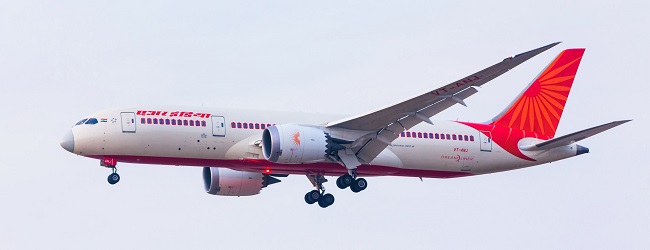Apr 14, 2025
Apr 14, 2025
In the vibrant panorama of the global aviation market, an intriguing landscape is taking shape – India. Forecasted to become the third-largest market globally, the Indian aviation industry is soaring high, ready to confront the vast blue yonder. And propelling this ascendance is a thriving fleet of over 1000 aircraft set to join the ranks in the next decade. Yet, amidst this upward trajectory, one can't help but wonder – can India's Maintenance, Repair, and Overhaul (MRO) services keep pace with this accelerated expansion?
As the clock ticks forward, Indian airlines continue to fuel their growth engines, adding a staggering 15 per cent capacity or 100 to 110 aircraft annually. By 2027, the sky will witness a formidable parade of approximately 1200 aircraft, a testament to India's burgeoning aviation sector.

Leading the charge is the Tata group's Air India, an avatar of Indian aviation strength. With a record-breaking order of 470 aircraft, Air India ignited a race that saw IndiGo's monumental order of 500 Airbus narrow-body aircraft at the Paris Air Show. As Air India awaits its first Airbus A-350 and bridges the gap with a lease of 30 aircraft, the question lingers – is India's MRO landscape ready to service this giant fleet?
A potential hurdle surfaces with the recent detection of production issues in Boeing 737 Max aircraft. This unexpected setback, a result of a supplier's "nonstandard manufacturing process," could disrupt the fleet expansion plans of Indian carriers like Air India and Akasa Air. So, as Boeing rushes to resolve the issue, can Indian MROs swiftly adapt to these unforeseen challenges?
Recognizing the magnitude of the task at hand, the Indian government unveiled a slew of strategic initiatives aimed at catalyzing the growth of MRO services. Import duty exemptions, customs duty waivers, simplified clearance processing, and opening the doors to 100% Foreign Direct Investment (FDI) via the automatic route are just some of the astute policy measures being deployed. Are these robust policies sufficient to usher in a new era of MRO services in India?
Currently, India's MRO landscape is dotted with formidable entities. Leading the pack is Air India Engineering Service Ltd. (AIESL), the largest government-owned MRO. With six primary bases across India and a range of capabilities, AIESL is a beacon of self-reliance. Joining the league are industry titans like IndiGo, Air Works India, and GMR AeroTechnik, each painting their unique strokes on the vibrant canvas of India's MRO industry.
The Indian MRO industry as of 2021 was worth USD 1.7 billion and is expected to reach USD 4 billion by 2031. The global MRO market was USD 68.5 billion in 2021, while the global MRO demand is expected to reach USD 117 billion by 2031. The Indian MRO industry recorded an 8.9 CAGR, compared to 5.6 CAGR globally.
The big question that remains, though, is how equipped is India's MRO industry to handle the upcoming aviation revolution? With an expanding fleet and a rapidly growing aviation market, the industry faces two major challenges – skill shortage and technology upgradation. How effectively can India bridge this skill gap and align with global technological advancements?
Furthermore, with the MRO industry witnessing a flurry of mergers and acquisitions, are we prepared for the changing face of this sector? As Indian MROs begin to acquire international certifications, is India ready to transition from a regional player to a global powerhouse?
The script of India's MRO saga remains unfinished, leaving us on a cliff-hanger as the industry hurtles towards 2027. As we stand at the dawn of a new era, one marked by burgeoning opportunities and daunting challenges in equal measure, let's ponder this – Can India's MRO industry ride the wave of the aviation boom, or will it buckle under the weight of its own ambitions?
Image (c) istock.com
23-Sep-2023
More by : P. Mohan Chandran